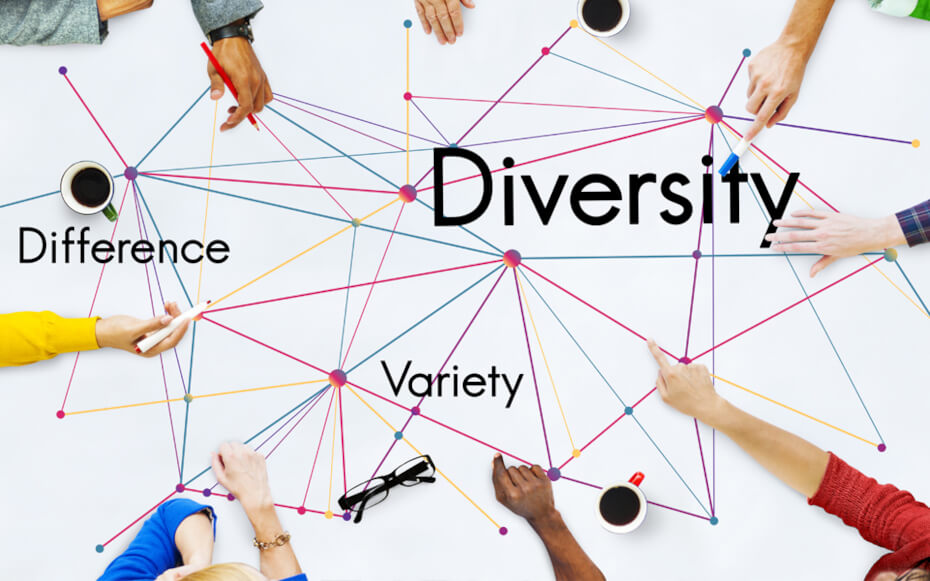NACE Journal, August 2017
Throughout the last several years, colleges and universities have witnessed scores of anti-racism campus protests across the country. We saw a powerful student movement that demanded institutional change around diversity, equity, and inclusion. This spurred many higher education institutions to examine their roles and the support given to underrepresented students across the diversity spectrum. Although much of the focus has been on faculty, admissions, and higher education administration, career centers can also play an important role in this critical change.
Career practitioners are uniquely positioned to work both with employers and students to transform current practices and contribute to larger campus efforts to promote diversity, equity, and inclusion into meaningful institutional change. However, career practitioners are not necessarily diversity experts, and leading that change can be daunting. The goal is for practitioners to become equity-minded in the work we do. By understanding the issues, building inclusive elements into our services, using data to tell our stories, and learning to advocate for students, we can make meaningful and intentional changes.
Understanding the issues
The incoming group of young adults entering college, Generation Z, is said to be the most ethnically diverse generation in U.S. history.1 Some career practitioners may have already experienced a rise in identity-related questions in their sessions. While some questions such as “Do I disclose my pregnancy in the interview?” and “How do I inform a recruiter that I am not a U.S. citizen?” are still commonly asked, a new layer of identity questions have arisen. You may have heard questions like these in advising sessions: “My religion prohibits me from shaking hands with the opposite sex. How do I handle this with a female interviewer?,” “As a woman, how can I aggressively negotiate without negative consequences?,” “How do I ‘come out’ and disclose my sexual orientation in the work force or on my resume?,” and “Should I hide my race/ethnicity on my resume?”
These questions are complex—and even if we have received enough training to understand the legal basis, our training does not necessarily prepare us to deliver a sensitive and well thought out response. Questions like these also point to a growing concern on bias and discrimination students might face. Do career practitioners understand how discrimination and bias are affecting student success in the work force? Do we know what to look for and how to advise students when encountering bias and discrimination? We don’t need to look far to see examples of how this can impact a student’s career success.
- Research shows bias and discrimination in the employment and hiring process among several minority groups. In a recent research study, Sonia Kang and her research team sent out 1,600 fabricated resumes to 600 companies. They found that resumes that were “whitened” by removing language that revealed their race were two to two and one-half times as likely to get call backs for interviews. Furthermore, this pattern held even for companies that emphasized diversity.2
- Salary inequity based on gender is well documented, and minority women show the greatest pay gap. Hispanic women’s salaries stand at 54 percent of white men’s salaries and salaries for African-American/black women are only 64 percent of white men’s salaries.3
- The LGBTQ community lacks legal protection in 29 states that would prohibit employers from firing or refusing to hire workers because of their sexual orientation. There is no state-level gender identity protection in 33 of the 50 states, and employees can be fired for being transgendered.4
Are career centers preparing students for a job search into a work force that is not always equitable?
What can career centers do to build inclusion?
Career centers can have an active role in contributing to the institutional efforts of being more diverse and inclusive. The practice of intentionally incorporating diversity and equity to support student development is encapsulated in the concept of inclusive excellence. Inclusive excellence is a comprehensive planning process that identifies a set of actions that focuses on diversity, equity, and inclusion and then infuses these actions into every layer of the work we do in career centers.5 This gives us the ability to create the most welcoming, inclusive environment possible so that students know they can come to us with those tough questions and receive the respect and guidance to help them succeed.
There is ample evidence and research from organizational scientists, economists, psychologists, and sociologists about the benefits of diversity in higher education and in the work force, but there is a notable lack of solution-focused models for career centers. At the University of Michigan School of Public Health, we adapted a culture change model and examined the four core areas of programming, resources, staff training, and employer recruitment. Then, for each of these functions, we mapped out specific inclusive tactics and strategies for implementation through the phases of 1) researching best practices and resources, 2) identifying barriers and motivating factors to making change happen in our office, 3) articulating a vision and implementing inclusive elements, 4) generating commitment from staff, faculty, and peers, and 5) making these efforts sustainable by collecting data, reporting, developing strategic plans, gathering stories, and forming alliances.6
For instance, are you using inclusive language, ethnic names, and examples in your resources and programming materials? Are you thinking about the space you present in—is it conducive to people of different body sizes and abilities? In staff meetings, is diversity regularly discussed to build competencies in staff or is training regularly offered?
With NACE survey data indicating that diversity is highly ranked by employers as “very important” or “extremely important” to their recruiting programs, there may be opportunities to support employers with their recruiting success and strengthen employer ties.7 What strategies can you leverage to promote diversity and brand your office as an advocate for diversity? How does your office promote your commitment to equal opportunity for all? Imagine the possibilities around us and the potential ability to make a significant impact.
Tracking successes and using data
Identifying your baseline and tracking trends is a critical step in building momentum and sustaining efforts around diversity, equity, and inclusion. Using metrics, measures, and milestones surrounding diversity and inclusion will help you tell your story and better advocate for additional resources or support from administration.
Metrics to use as indicators of change could include monitoring career outcome data between minority and non-minority students to determine any differences in job-search duration and salary reported. For example, are we noticing that minority students are taking longer in their job search? Are we noticing salary inequities among minority females? Knowing how this affects students at your institution can be a powerful motivation and provide effective data and storytelling to top administration when asking for resources and support for new initiatives. Collecting data to determine if the most vulnerable student populations are using career services and feel welcomed through inclusion efforts are also critical. Assessing usage of services such as advising, tracking workshop attendance, and gauging participation in the employer recruitment visits by underrepresented students can indicate areas for growth or point to success of your inclusion efforts.
Additionally, other areas to gauge include the growth of staff diversity trainings, the number of programs that have elements specific to diversity and inclusion, and the number of available student diversity and inclusion resources. Monthly and annual reporting efforts could include sections specific to diversity and inclusion efforts for ongoing tracking.
Advocacy
Career practitioners are at the front lines, facilitating student success and serving as a critical connection point with employers. The intentional process of building our professional competencies around diversity and inclusion empowers us to advocate for equity. The further developed our competencies and inclusive operations, the more we can find opportunities to mitigate the effects of discrimination and bias when working with our employer partners and vendors.
There are tremendous opportunities for career offices to contribute to institutional change at the college or university, to change our office culture to embrace inclusion, and to advocate for these core values of diversity, equity, inclusion, and accessibility in the work force beyond. Opportunities are all around us to make equitable changes. Diversity matters in higher education, the work force, and within our own office cultures.
End Notes
1 Williams, G. L. (2015, December 04). “Diverse, connected and debt-averse: Move over millennials, here comes Generation Z.” Retrieved from http://www.today.com/money/generation-z-eclipse-millennials-economic-force-says-goldman-sachs-t59436
2 Kang, S. K., Decelles, K. A., Tilcsik, A., & Jun, S. (2016). “Whitened Resumes.” Administrative Science Quarterly, 61(3), 469-502.
3 Hill, C. (Spring 2016). “The Simple Truth about the Gender Pay Gap.” Retrieved from: http://www.aauw.org/research/the-simple-truth-about-the gender-pay-gap/
4 “Lesbian, Gay, Bisexual, Transgender Workplace Issues.” (2016, October 25). Retrieved January 17, 2017, from http://www.catalyst.org/knowledge/lesbian-gay-bisexual-transgender-workplace-issues
5 “Making Excellence Inclusive.” (2016, October 03). Retrieved from https://www.aacu.org/making-excellence-inclusive
6 Cameron, K. Practicing Positive Leadership: Tools and techniques that create extraordinary results. Brett-Koehler Publishers, CA, 2013.
7 National Association of Colleges and Employers. (January 2017). “Figure 16: Rated Importance of Recruiting Program Issues” from the 2016 Recruiting Benchmarks Survey.







